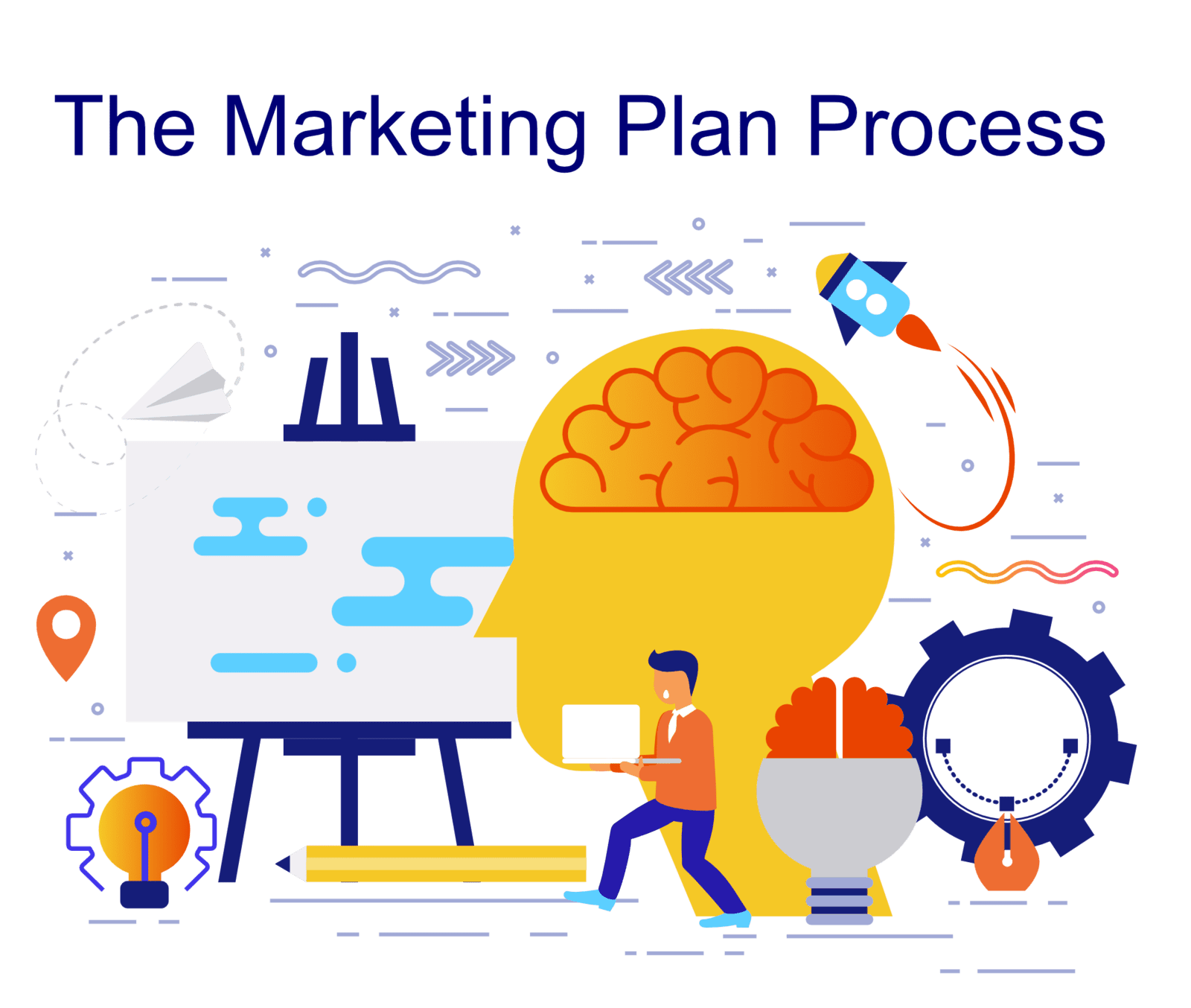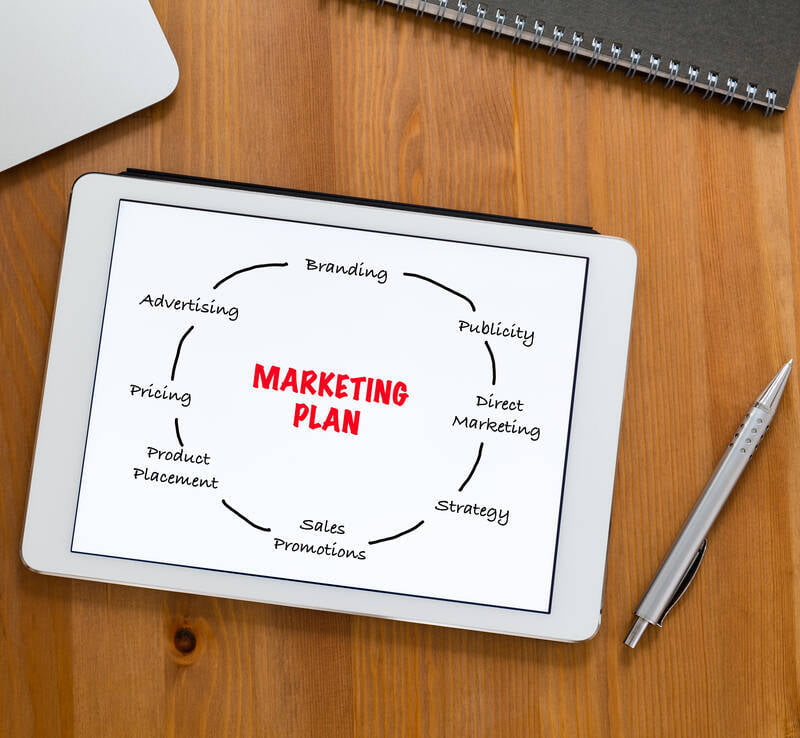
Creating the best market plan deals with planning a marketing strategy designed for a certain period of time and its implementation in a certain market. Planning is actually about the strategy and guidelines that management applies to sell its products on the market and achieve sales targets within a given timeframe. The company’s management or marketing team must anticipate market trends and try to achieve the goals set within the said deadline. The marketing planning process describes how a company can make its product successful and an overview of the target market and market segmentation. The process deals with the selection of a target market and how to enter the market with the product. Today, it is necessary for a company to successfully pursue its marketing strategy to reach its target market. In order to give the company an idea of where it would like to see its business in the future, a marketing plan is introduced. Your product’s survival depends on the implementation of the marketing strategies with strict compliance.
What Is a Marketing Plan and Why Do I Need One?
What Is a Marketing Plan and Why Do I Need One?
A marketing plan is a document that companies use to outline their marketing strategy and determine how they want to spread the word about their products and services. It typically covers all steps a company takes to successfully implement a marketing campaign. You can create a marketing plan that gives you an overview of your company’s overall marketing strategy or simply focus on a few key areas such as sales, customer service, and marketing tactics. Targets should be clear and concise, as they should be based on your company’s business goals for the next few months.
8 Simple Steps to Create the Best Marketing Plan
8 Simple Steps to Create the Best Marketing Plan
Most marketing plans include several key elements that help you determine which strategies you want to implement. Note that there may be variations in the marketing plan you need depending on your industry and the goals of the marketing team. There are some fundamental steps that are essential in creating your marketing plan. With these guidelines, you can create a marketing plan that works specifically for your business. Following this guide will set the stage for everything that is to come.
1. Define Your Marketing Goals
1. Define Your Marketing Goals
The first phase of the marketing planning process is to define the goals you want to achieve. Before setting business goals, you should also plan a marketing budget for the year. Remember that the vision of the company describes what the company stands for and where it wants to go, and you should be aware of this ultimate goal while staying within the budget. Implementing the right plan can also avoid the risk of failure and satisfy the target market without any problems. It also drives and influences your team to invest their time in achieving the goals of the company by using the resources productively.
When you develop goals, you are responsible for monitoring and executing what is needed to achieve them. A good strategy to do so is to write them down in a SMART format to ensure accountability. The goals can be internal, externally focused, or both, and they should be written in a format consistent with the business goals they represent. The SMART format implies the following approach: “Specific, Measurable, Attainable, Realistic and Time-bound.” It represents your company’s goals in terms of time, scope, and feasibility.

2. Evaluate Your Current Situation
2. Evaluate Your Current Situation
The second step is to monitor the current situation for long-term strategic planning – the direction in which the company is moving. Monitoring this development is the first step in the marketing planning process and the most important part of your marketing strategy.
3. Conduct A SWOT Analysis
3. Conduct A SWOT Analysis
You need to know the risks and benefits associated with the launch of your product. Create the layout of resources and conduct a thorough analysis of various internal and external aspects of the business. Monitor the current situation by taking into account certain external aspects that are directly related to your company’s internal capabilities and performance. Such external aspects are directly related to internal facets at all levels of the company, such as the quality of products and services. Ultimately, you want your marketing efforts to result in high-quality leads and pipelines that open up new sales opportunities.
4. Research Your Market
4. Research Your Market
In addition to evaluating internal or external factors, evaluate your resources and target the right market. Check the market and divide it into different segments so that you can penetrate the product more clearly in each of these markets. Do market research to understand your competitors, know who you are addressing, and understand your customer’s needs. Design the internal process of how your company perceives and meets these needs and understand the needs of consumers, the depreciation associated with their fulfillment, the changing demand over time, and the impact on your business. This allows you to analyze and improve the current situation and plan for the future in order to ensure the long-term success of your company.
5. Define Your Target Audience
5. Define Your Target Audience
Once you know the market inside out, you will get accustomed to the sales processes of your business to turn your leads into opportunities for customers. The leads you have are those prospects that are essential for you and the business you are about to launch. As your business grows, you won’t know every unique situation of each individual interested party, and a single message won’t work for everyone. You want your technical audience and customers to like to hear from you and not be afraid, especially if you have a limited budget and bandwidth. The way to achieve this is through an intelligent marketing approach that sets a marketing strategy and execution plan that match your business goals and begin with the excerpt from your current marketing program. To adopt a marketing approach, you need to create a buyer persona and a shopper persona. A persona is a fictitious representation of an exemplary customer which is based on well-researched knowledge about the personality, interests, and preferences of an ideal customer.

For example, a business manager can be defined as someone who tries to flourish the business by handling the cost and expenses. They would also make sure that the support invested in the business is based on a long-term relationship between the two parties. The second person could be a technical engineer or senior engineer who excels at what they do. They want to get a better understanding of how you can provide your service. This helps you to focus on the market segments you want to reach, understand their pain points, and also helps you reach the desired market by selecting the right marketing strategies to position your product, such as advertising, social media campaigns, etc. Another step will be to select different strategies that will be helpful in getting closer to your target market.
6. Develop an Activity Plan
6. Develop an Activity Plan
Once you have set your goals and formulated a proper budget to cater to your needs, it is now time to come up with an activity plan so that you can put your plan into action. You can make numerous strategies but executing them is a whole different story. Many strategies fail because they do not have a proper channel for execution. If you want to successfully put your strategy forward, come up with a campaign structure. A campaign structure is one of the most efficient ways to execute a plan because it revolves only one goal. It is a series of different activities that focus on a common premise that can be focused internally or externally. However, all activities within the campaign focus on the company’s main goal. Campaigns can extend your reach, brand awareness, or increase demand generation. On the other hand, your strategy approach presents an opportunity to promote a particular product or service if you have the time and resources.
7. Develop a Good Strategy
7. Develop a Good Strategy
The most important part of the process is the proper documentation of your strategy. If competition in your market has become so fierce, you cannot survive without good planning. The marketing strategy is designed to give the company a competitive advantage, not only in terms of market size but also in terms of overall success. Based on your company’s core competencies, decide whether you want to act as a first-mover advantage strategy and how to implement your marketing efforts to reach the desired customers. Developing your marketing strategy and objectives to achieve the overall goals of the company should also include marketing tactics that best suit your business promotion, such as advertising, promotions, campaigns, social media, etc. If the direction you are headed in is clear, a coherent marketing plan is ensured. Not only does it target your customer persona for each campaign, but it is also time and budget-oriented. This can be as easy and simple as building a pioneering role in a particular segment or as difficult and complex as increasing web traffic and leads.

8. Measure Your Performance
8. Measure Your Performance
When you learn to write a marketing plan, you need to think about the important steps that lead to an effective marketing strategy. A well-defined plan will help you focus on your high-level marketing goals. Set goals that you can measure before, during, and at the end of your campaign, and let those goals help you plan a realistic schedule for your marketing plans. If you have difficulty getting involved in certain activities, reading the marketing plan can help you put the pieces together, especially if you have different marketing strategies in place for different segments of your business. You will also have to consider your current operations. Operational activities are integrated into the planning process: they draw up an action plan, allocate resources, design a budget for the implementation of the processes discussed and monitor the plan on the basis of customer feedback. Therefore, make regular reviews of your advertising plans and monitor your process consistently.

Developing a Strategic Marketing Plan
Developing a Strategic Marketing Plan
As soon as you have aligned your goals with your marketing activities, narrowed your focus, and defined your overall marketing strategy, you can now focus on your marketing plan that describes your product, your consumer group, and how you will implement your marketing strategy to achieve your goals. The content of your marketing plan typically covers the goals and actions that the marketing team will take. These goals are crucial for the orientation of your team and of narrowing the focus of your employees. Documenting these goals ensures that you align the team with what you want to achieve in your marketing efforts. This part of your marketing plan is of utmost importance, as marketing tactics determine the amount of time and money you will spend implementing your plan. If your business is small and does not have the personnel needed to implement the plan, you may need to hire a marketing agency to implement the plan effectively. Universal Creative Solutions can help you determine the tools and resources you need to achieve your marketing goals, develop a strategic marketing plan that works for your business, and implement it effectively to achieve long-term success. By developing a strategic marketing plan, you can ensure that you are aiming for the right goals each year and doing so within your budget.

